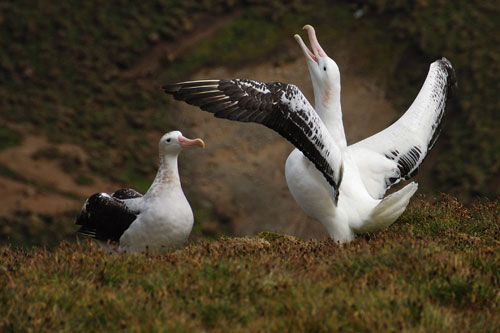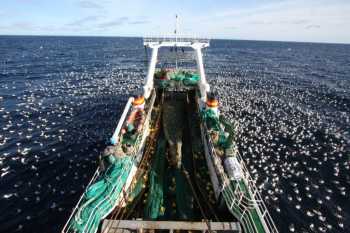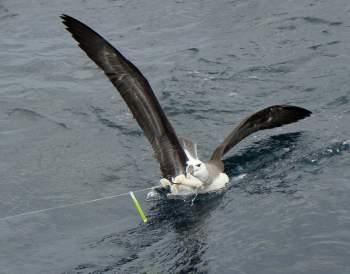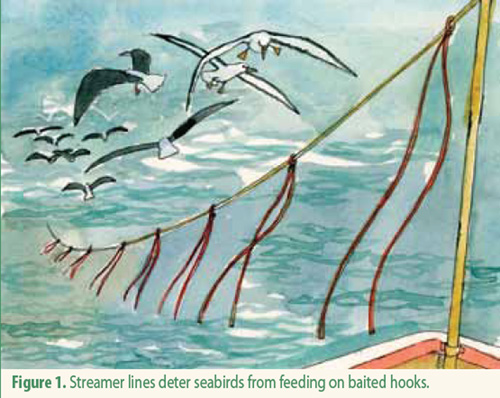As far back as the late 1970s marine ornithologists have travelled each year to Gough Island in the South Atlantic to conduct research on its threatened populations of albatrosses and petrels. These trips have formed part of South Africa’s annual relief of its weather station on the island. This year’s expedition sails from Cape Town today on the Antarctic research and supply vessel, the m.v. S.A. Agulhas II.
As in recent years, seabird research and monitoring on Gough will concentrate on globally threatened species, including the near-endemic and Critically Endangered Tristan Albatross Diomedea dabbenena, the Endangered Atlantic Yellow-nosed Albatross Thalassarche chlororhynchos and the Endangered Sooty Albatross Phoebastria fusca. All three ACAP-listed species face fatal attacks on their chicks by Gough’s House Mice Mus musculus. Research will also take place on the two other ACAP-listed species that breed on Gough: the Southern Giant Petrel Macronectes giganteus (Least Concern) and the Grey Petrel Procellaria cinerea (Near Threatened), with the latter species also recently proven to be at risk to mice (click here).
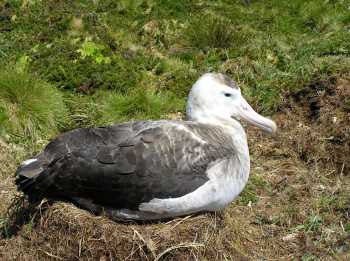
A female Tristan Albatross incubates on Gough Island, photograph by John Cooper
Three field researchers on the expedition will remain on Gough until October 2016, residing in the weather station. This year they are Jan Bradley (from South Africa, on his sixth visit since 2010) and Derren Fox and Chris Taylor (both from the UK). The 2014/15 field team of Christopher Jones, Werner Kuntz and Michelle Risi will be returning on the ship next month. The new team will continue monitoring of albatrosses and petrels during their 13-month stay, as well as continuing with alien plant control in the vicinity of the weather station.
The ornithological component of the expedition is being led by Peter Ryan, Director of the University of Cape Town’s FitzPatrick Institute and Alex Bond from the RSPB’s Centre for Conservation Science. Accompanying them on the trip this year are Richard Phillips (British Antarctic Survey and also Co-convenor of ACAP’s Population and Conservation Status Working Group) who will be helping to retrieve GLS loggers deployed on prions Pachyptila spp. last year and Mark Dagleish, a veterinary pathologist from the Moredun Institute in Edinburgh, Scotland, who will be screening the island’s endemic land birds for diseases and parasites.
An aerial photographic survey by South African helicopter of Tristan da Cunha’s population of Atlantic Yellow-nosed Albatrosses will also be attempted during the expedition (if weather conditions allow) when the S.A. Agulhas II visits Tristan on her voyage back to South Africa in early October.
Click here for news of last year’s expedition.
With thanks to Peter Ryan for information.
John Cooper, ACAP Information Officer, 03 September 2015

 English
English  Français
Français  Español
Español 